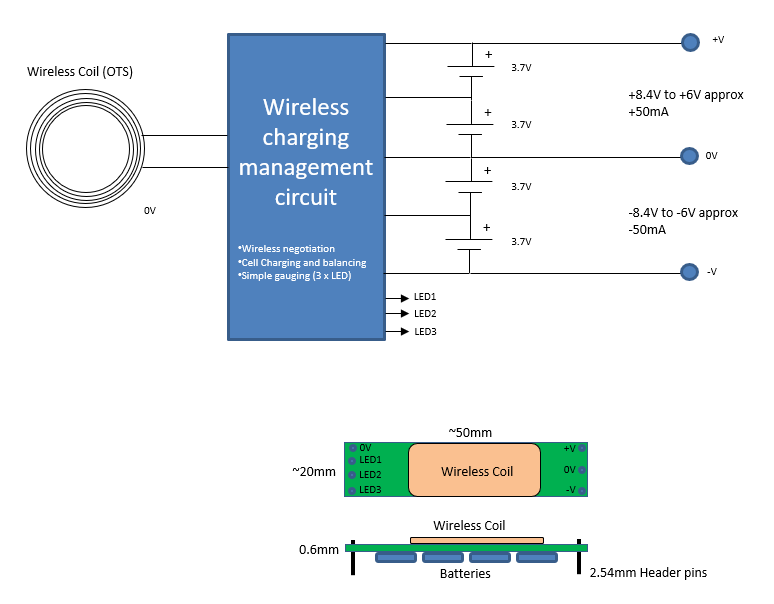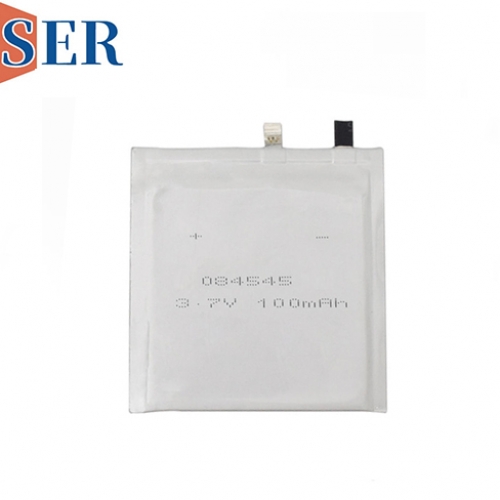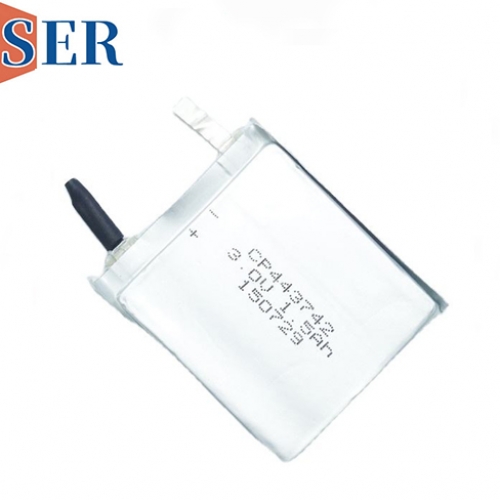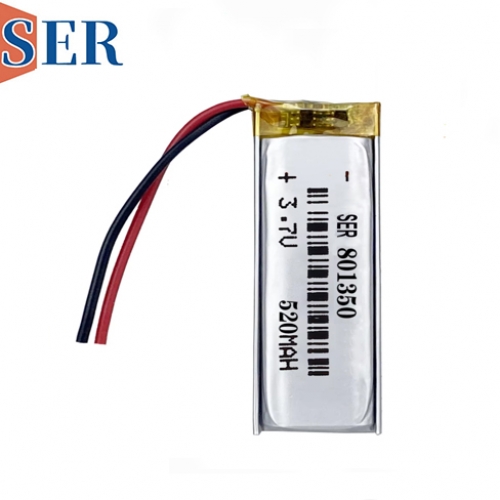Rechargeable Ultra Thin Battery: SER503035 3.2V LiFePO4 Lipo Battery
Rechargeable Ultra Thin Battery: SER503035 3.2V LiFePO4 Lipo Battery – The Safe, Long-Life Power Core for Small Medical Electronics

In the rapidly evolving landscape of small medical electronics, power supply has emerged as a make-or-break factor for device performance, user safety, and market success. From portable blood glucose monitors to wearable vital sign trackers, implantable auxiliary devices to home-based diagnostic tools, modern medical equipment demands a battery that balances three critical attributes: ultra-slim form factor for seamless integration, rechargeable convenience for long-term use, and uncompromising safety for patient-centric applications. This is where the rechargeable ultra thin battery stands as an indispensable innovation—and Serui Battery’s SER503035 3.2V LiFePO4 Lipo Battery redefines excellence in this category. Engineered with LFP (lithium iron phosphate) chemistry, 300mAh capacity, and a ultra-thin pouch cell design, this Lipo battery delivers the safety, reliability, and long cycle life that small medical electronics require. As a trusted partner for medical device manufacturers worldwide, Serui Battery (www.serui-battery.com) brings decades of expertise to powering the next generation of life-enhancing medical technology.
The Rising Demand for Rechargeable Ultra Thin Battery in Small Medical Electronics
The medical device industry is undergoing a profound shift toward miniaturization and portability. Today’s patients and healthcare providers increasingly rely on small, lightweight electronics that deliver accurate data and therapeutic support without restricting mobility. From a diabetic patient’s pocket-sized glucose meter to a senior’s wearable fall-detection device, these products share a common constraint: space. Traditional batteries—bulky, rigid, or limited in rechargeability—can no longer meet the needs of devices that are designed to be slim, discreet, and long-lasting. This is driving unprecedented demand for rechargeable ultra thin battery solutions that can fit into tight enclosures while delivering consistent power through hundreds of charge cycles.
For small medical electronics, the stakes are even higher than in consumer devices. A battery failure isn’t just an inconvenience—it can compromise patient safety, disrupt treatment plans, or erode trust in medical equipment. This is why safety and reliability are non-negotiable. Lipo battery (lithium polymer battery) technology has long been favored for its high energy density and flexible form factors, but not all Lipo batteries are created equal. The SER503035 from Serui Battery elevates the standard by adopting LiFePO4 (LFP) chemistry—a game-changer for medical applications. Unlike traditional lithium cobalt oxide (LCO) Lipo batteries, LiFePO4 offers inherent thermal stability, overcharge/over-discharge protection, and zero risk of thermal runaway, making it the safest lithium-ion chemistry available today.
Key Pain Points Solved by the SER503035 Rechargeable Ultra Thin Lipo Battery
As medical device manufacturers scramble to meet regulatory requirements and consumer expectations, the rechargeable ultra thin battery has become a strategic component. The SER503035 3.2V LiFePO4 Lipo Battery addresses these pain points head-on, offering a power solution that doesn’t force trade-offs between size, safety, and performance.
Technical Deep Dive: What Makes the SER503035 Lipo Battery a Game-Changer for Small Medical Electronics
To understand why the SER503035 is the preferred rechargeable ultra thin battery for medical applications, we must examine its technical specifications and engineering innovations. Every detail—from chemistry to form factor—has been optimized for the unique demands of small medical electronics.
Core Specifications of the SER503035 3.2V LiFePO4 Lipo Battery
Standout Technical Advantages for Medical Use Cases
1. LiFePO4 Chemistry: The Gold Standard for Medical Battery Safety
Safety is the top priority for any medical device component—and the SER503035’s LiFePO4 chemistry delivers unmatched peace of mind. Unlike LCO or NCM (nickel-cobalt-manganese) Lipo batteries, LiFePO4 has a stable crystal structure that resists thermal runaway, even when punctured, short-circuited, or overcharged. This eliminates the risk of fire or explosion—a critical concern for devices used in close proximity to patients. Additionally, LiFePO4 batteries are non-toxic and produce no harmful fumes, making them ideal for implantable or wearable devices that interact with the human body. For medical device manufacturers, this translates to reduced liability and easier regulatory approval, as LiFePO4’s safety profile aligns with the strict requirements of agencies like the FDA and EU MDR.
2. Ultra-Thin, Flexible Pouch Cell Design
As small medical electronics become slimmer and more ergonomic, the battery must adapt. The SER503035’s rechargeable ultra thin battery design—just 5.0mm thick—fits into devices with tight space constraints, such as wearable patches, miniaturized ultrasound probes, and portable pulse oximeters. Unlike rigid cylindrical batteries, the flexible pouch cell conforms to irregular shapes, allowing engineers to design more compact, user-friendly devices. For example, a wearable heart rate monitor can integrate the SER503035 without adding bulk, ensuring all-day comfort for patients. This flexibility also simplifies manufacturing, as the battery can be easily integrated into automated assembly lines for high-volume production.
3. Long Cycle Life and Low Self-Discharge
Small medical electronics are often used continuously for months or years—think of a patient’s daily glucose monitor or a home-based nebulizer. These devices require a battery that can withstand repeated charging without losing capacity. The SER503035 delivers 1500+ charge-discharge cycles with 80% capacity retention, meaning it can power a device for 4+ years (assuming daily charging). This reduces the need for battery replacements, lowering maintenance costs for healthcare providers and improving user experience for patients. Additionally, the battery’s low self-discharge rate (% per month) ensures it remains charged during storage—critical for emergency devices like portable defibrillators or backup power for diagnostic tools.
4. Stable Voltage Output for Accurate Data
Medical devices rely on precise power to deliver accurate readings. A battery with fluctuating voltage can skew sensor data, leading to misdiagnoses or ineffective treatment. The SER503035’s LiFePO4 chemistry provides a flat discharge curve, maintaining a stable 3.2V output from full charge to near depletion. This ensures consistent performance for sensors, microcontrollers, and data transmission modules in devices like blood pressure monitors, ECG machines, and glucose meters. For example, a continuous glucose monitor (CGM) powered by the SER503035 will deliver reliable blood sugar readings throughout the day, helping patients and doctors make informed decisions about insulin dosage.
Application Spotlight: How the SER503035 Rechargeable Ultra Thin Lipo Battery Powers Small Medical Electronics
The SER503035’s unique combination of safety, slim design, and long cycle life makes it the ideal Lipo battery for a wide range of small medical electronics. Below are detailed use cases that highlight how the battery solves real-world challenges for manufacturers and end-users:
1. Wearable Medical Devices
Wearable technology is transforming healthcare, enabling continuous monitoring of vital signs, activity levels, and chronic conditions. Devices like fitness trackers for cardiac patients, wearable patches for wound healing, and fall-detection bracelets for seniors require a battery that is thin, lightweight, and rechargeable. The SER503035’s 5.0mm thickness and 12g weight make it perfect for these applications—users won’t even notice the battery in their device. Its LiFePO4 chemistry ensures safety, even when worn against the skin for extended periods, and its 1500+ cycle life means the device can be used for years without battery replacement. For example, a wearable ECG patch powered by the SER503035 can monitor a patient’s heart rhythm 24/7, transmitting data to healthcare providers while remaining comfortable and unobtrusive. The rechargeable ultra thin battery design also allows the patch to be slim enough to fit under clothing, improving patient compliance.
2. Portable Diagnostic Equipment
Portable diagnostic tools—such as handheld ultrasound machines, portable blood analyzers, and point-of-care (POC) testing devices—are essential for healthcare in remote areas, emergency rooms, and home settings. These devices need a battery that is compact, powerful, and reliable, as they often operate in harsh or unpredictable environments. The SER503035’s 300mAh capacity provides enough power for 8-12 hours of continuous use (depending on device power consumption), and its wide operating temperature range (-20°C to 60°C) ensures performance in cold clinics or hot outdoor settings. Its built-in protection features (overcharge, short-circuit protection) prevent battery failure during critical diagnostic procedures, while its LiFePO4 chemistry eliminates the risk of overheating—even when the device is used for extended periods. For a portable blood glucose meter, the SER503035’s stable voltage output ensures accurate readings, while its rechargeable design eliminates the need for disposable batteries, reducing environmental waste and long-term costs.
3. Implantable Auxiliary Devices
While fully implantable devices (like pacemakers) require specialized hermetically sealed batteries, many implantable auxiliary devices—such as neurostimulation patches, implantable drug delivery systems, and biosensors—benefit from the SER503035’s rechargeable ultra thin battery design. The battery’s slim profile (5.0mm) and flexible pouch cell can be integrated into implantable devices that are placed under the skin, while its LiFePO4 chemistry ensures safety for long-term implantation. Unlike toxic battery chemistries, LiFePO4 is biocompatible, reducing the risk of adverse reactions. The battery’s long cycle life (1500+) means the device can be recharged wirelessly (via inductive charging) for years, eliminating the need for invasive battery replacement surgeries. For example, an implantable drug delivery system powered by the SER503035 can administer medication on a schedule, with the battery recharged externally, ensuring consistent therapy for patients with chronic conditions like Parkinson’s disease or diabetes.
4. Home Medical Equipment
Home medical equipment—such as nebulizers, CPAP machines for sleep apnea, and portable oxygen concentrators—requires a battery that is reliable, easy to recharge, and safe for home use. Many of these devices are used by elderly or disabled patients who may not have the technical expertise to handle complex battery maintenance. The SER503035’s user-friendly design addresses this: its rechargeable capability means no more fumbling with disposable batteries, and its built-in protection features prevent overcharging (even if left plugged in overnight). The battery’s long cycle life ensures the device remains operational for years, reducing the need for service calls or replacements. For a home CPAP machine, the SER503035’s stable power output ensures consistent air pressure throughout the night, while its ultra-thin design allows the machine to be compact and portable—perfect for travel. The Lipo battery’s low self-discharge rate also means the machine can be stored for weeks without losing charge, ready for use in case of power outages.
5. Emergency Medical Devices
Emergency medical devices—such as portable defibrillators, emergency oxygen concentrators, and trauma monitors—require a battery that can perform reliably in high-pressure situations. The SER503035’s LiFePO4 chemistry is resistant to shock, vibration, and extreme temperatures, making it ideal for emergency use. Its quick-charging capability (80% capacity in 2 hours) ensures the battery can be recharged rapidly between emergencies, while its long shelf life means it remains ready for use even when stored for extended periods. For a portable defibrillator, the SER503035’s stable voltage output is critical for delivering the correct shock to a cardiac arrest patient, while its safety features prevent accidental discharge.





